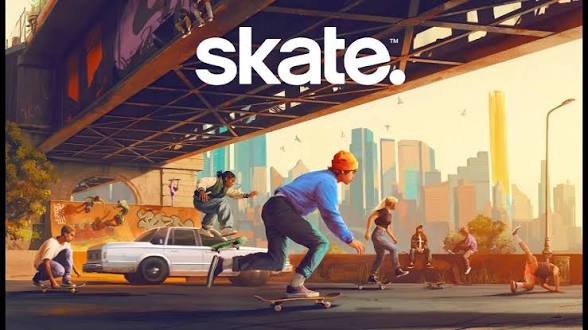skate. is the long-awaited reboot to a franchise that’s etched deep into my gaming DNA. I wish I could say that the game’s DNA was fully in tact as well, but I’ll dive into that later. Back in the late 2000s, when skate first dropped, I was knee-deep into skateboarding and the culture. The original series wasn’t just a game; it redefined the genre by ditching the over-the-top, arcade absurdity of Tony Hawk’s Pro Skater. Instead, it plunged you into a gritty, authentic skate culture with realistic physics, urban exploration, and that raw, street-level vibe. The absence of skate for 15 years left a void that games like Session and Skater XL tried to fill. Sure, those games nailed the atmosphere, but they never quite captured skate‘s signature “flick-it” control magic.
Now, in 2025, EA and Full Circle have revived skate, launching in early access as a free-to-play, online-focused sandbox set in the sprawling, fictional playground of San Vansterdam. After about 25 hours with the current build, the core feel is back in full force, and it’s just as satisfying as ever. They’ve even layered in fresh mechanics like parkour-assisted traversal and wild stunt dives, making navigation around the city feel dynamic and expansive. As an early access title, it has a surprisingly solid foundation.

But here’s the rub—this reboot feels like it’s traded its soul to reach a broader audience. Gone are the pro-skater cameos and the rebellious spirit. Instead, we get a cringey AI companion that feels completely out of touch. The tone has bubbled up into something overly cheerful, almost corporate, and the art style veers closer to The Sims 4‘s plastic sheen than the gritty realism of older titles. It feels as though Full Circle only watched X Games and never watched a Baker tape. skate. has the potential to be the best playing entry yet, but at what cost?
Developer & Publisher // EA, Full Circle
Platforms // PC, Xbox Series X, PS5
MSRP // Free-to-Play
Release Date // September 16th, 2025 (Early Access)
Previewed On // PC (EA)
Presentation & Soundtrack — A Sketchy Landing
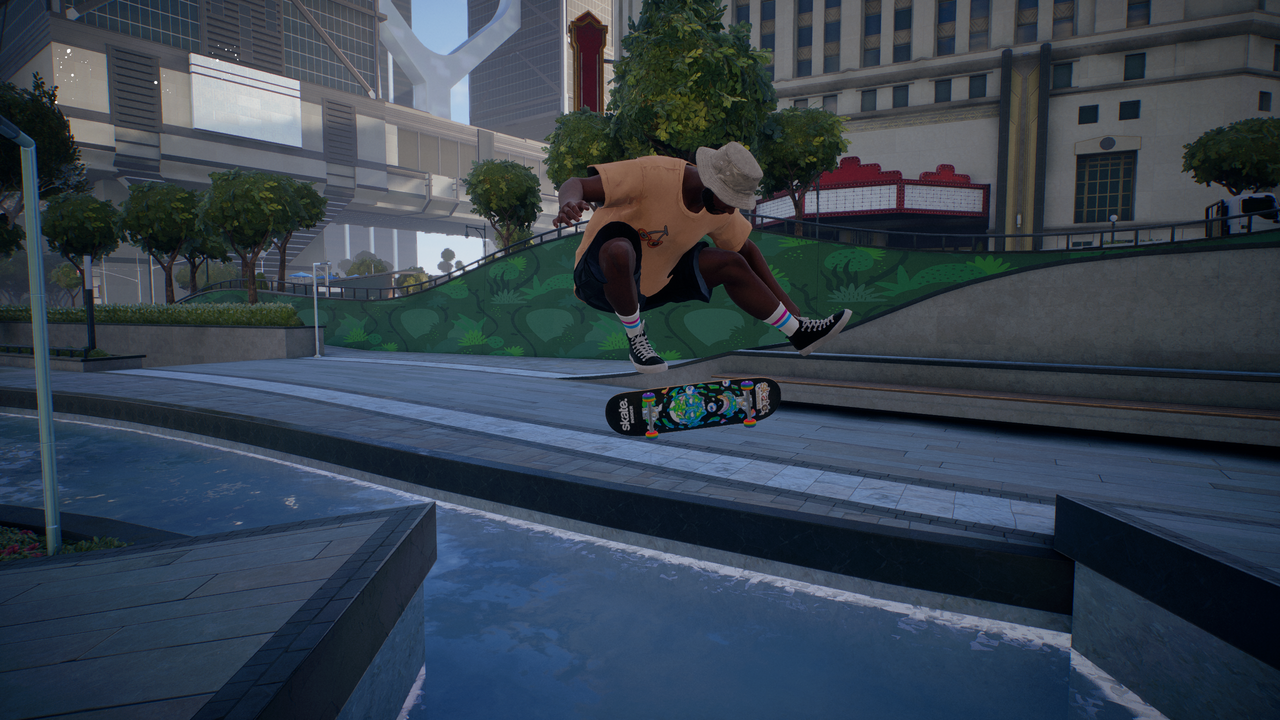
Diving into the presentation, skate. doesn’t exactly wow with current-gen flair. Graphically, it’s competent but not groundbreaking. Powered by Frostbite, the textures and lighting often come off flat. There is a lot of pop-in on the PC version that I played at Ultra settings, with objects and details loading in abruptly as you roll closer, which can break immersion. For a 2025 release, the absence of a day/night cycle or dynamic weather is a massive letdown. Past games didn’t have them either, but in an era where even Mario Kart has this feature, it’s a disappointing omission.
That said, the world itself is a visual treat for skaters. San Vansterdam bursts with vibrant districts: from towering skyscrapers to beachside viewfronts. It’s meticulously designed as a skater’s paradise, with spots that encourage creativity—hidden ledges, massive stair sets, and even vert-friendly parks. But it all feels a tad manufactured, like a theme park version of a city rather than a lived-in metropolis. It’s a miracle if you spot more than two pedestrians on screen at the same time. Missing in action is the iconic Hall of Meat feature from previous games, where bails turned into hilarious, bone-crunching spectacles with X-ray replays. Without it, falls feel underwhelming, robbing the game of that visceral punch that made Skate‘s physics shine.
Presentation & Soundtrack (Continued)
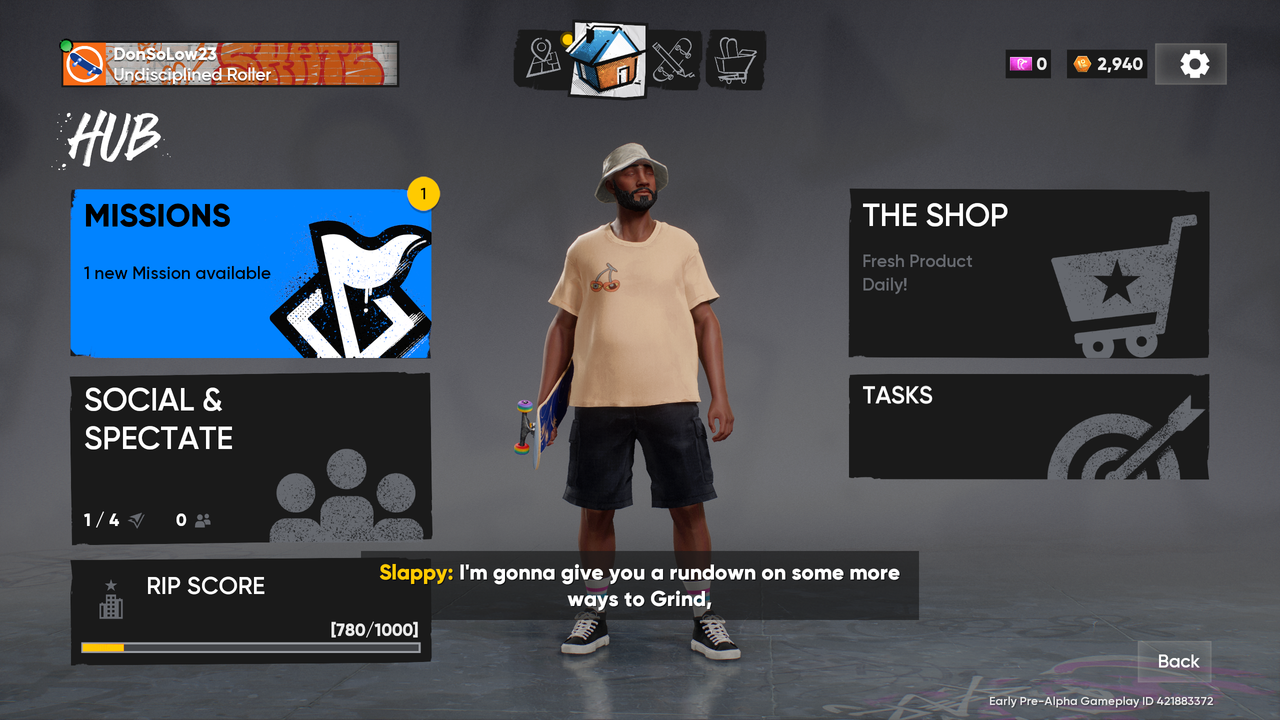
Character models exacerbate the off-putting shift. The realistic character models have been traded in for less polished The Sims avatars. It’s a drastic departure, making the world feel less authentic. The character creator, while functional, is surprisingly barebones for an EA title. Options for face and body are limited compared to something like Dragon Age: The Veilguard or EA Sports titles. Notably, Afro-centric hairstyles and features are scarce, which feels out of step with their recent works. Hopefully, this improves over the early access period.
On the audio front, the soundtrack salvages some points. It’s a solid mix of licensed tracks and originals, leaning heavily into pop-rock with upbeat anthems, but it skews too safe. Past skate. games nailed eclectic playlists that felt at home in real skate videos, and Tony Hawk’s legendary soundtracks set the bar sky-high. Here, it’s decent but forgettable. Sound effects, though, are spot-on: the satisfying “clack” of a landed trick, the grind of wheels on metal, and the thud of a bail all feel tactile and immersive.
Characters & Narrative — Forgotten Roots
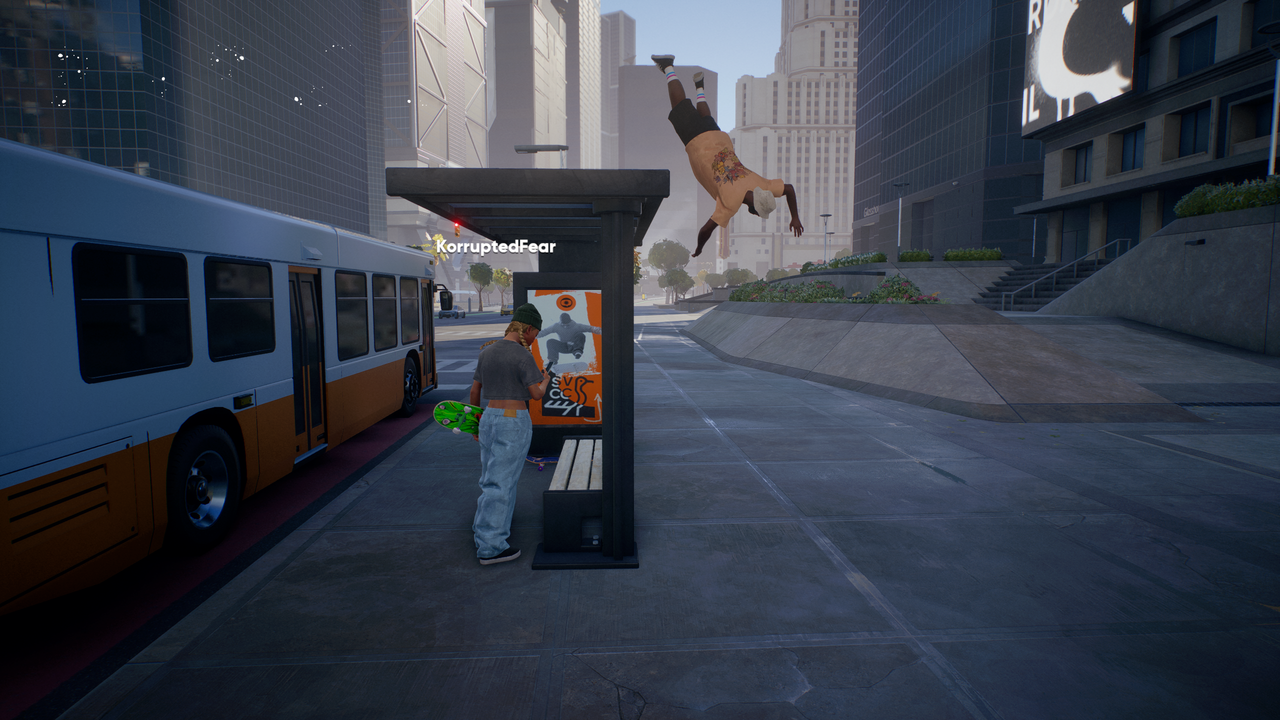
Story-wise, skate. keeps it light and basic, which isn’t inherently bad for a sandbox game. You roll into San Vansterdam as a fresh-faced skater, building rep by impressing local crews through challenges. Each district has its own skate collective, and you grind your way up by completing their tasks—nothing groundbreaking, but it provides structure. Unlike previous entries, where the goal was crystal-clear (go pro, build a brand), here it’s more aimless. That’s fine for free-form play, but it lacks the motivational hook that drove progression in Skate 1-3.
The real offender is the narrative department is Vee, your AI skate companion—a drone camera that records sessions and narrates your journey. It’s meant to replace the human videographer from old games, but it lands like a tone-deaf gimmick. Vee’s voice is robotic, but overly enthusiastic, spewing quips that feel like what my parents believe skaters would like to hear. It completely shatters the immersion, turning gritty street skating into a sanitized pep talk. It’s the equivalent of swapping the edge of Need for Speed Underground for Forza Horizon‘s festival cheer. That’s the tonal whiplash they’ve accomplished here. Skate.’s soul was in its subtle nods to real culture: pro cameos, raw banter, and that anti-establishment grit. Vee is the opposite, making the game feel corporate.
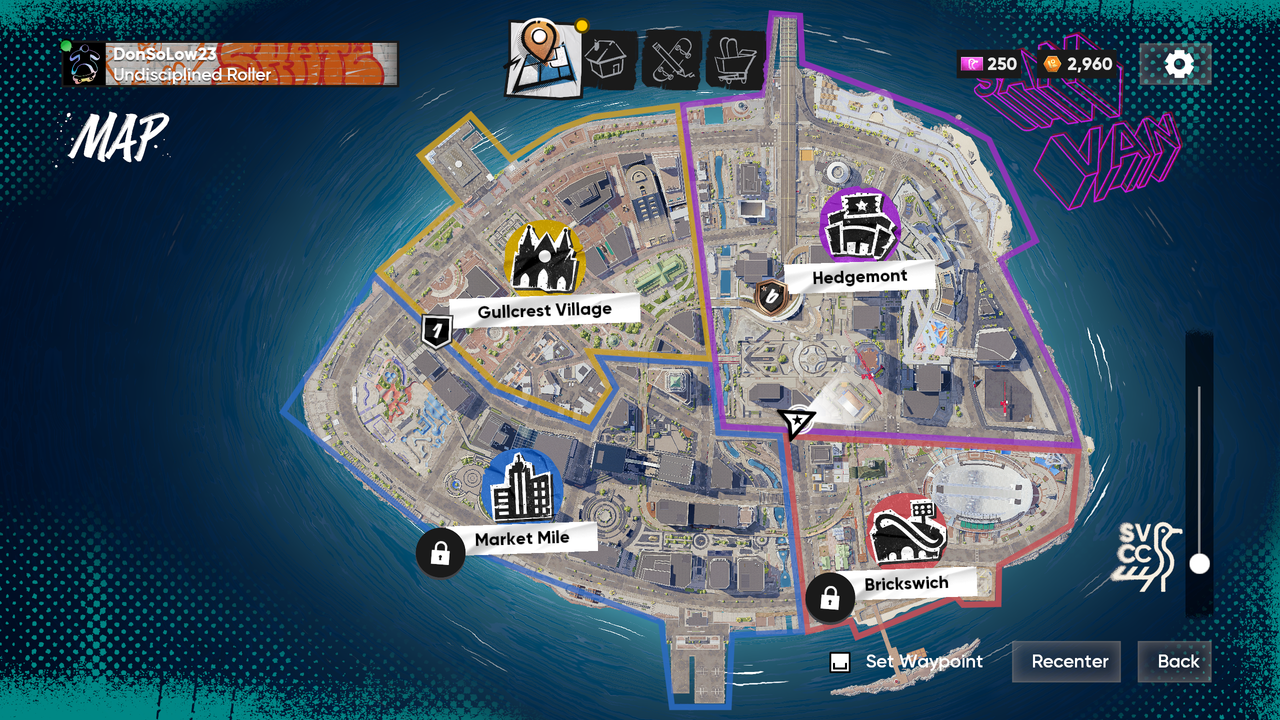
Other characters fare no better. Crew leaders and members are all one-note and devoid of any real personality. You also never see any of these characters in person. They’re just floating heads that communicate with you over the phone. I guess it helps that most conversations are short and straight to the point and can easily be ignored or skipped.
Gameplay & Controls — Where the Magic Happens
This is where skate. redeems itself: the gameplay and controls are pure bliss, arguably the best in the series. The signature “flick-it” system returns triumphantly—using analog sticks to mimic real foot movements for tricks like pop shuv-its, kickflips, or laser flips. It’s intuitive, rewarding, and has that addictive tactile feedback; nailing. Multiple control schemes cater to all: Classic for purists, Streamlined for newbies easing into tricks, and Experienced for pros craving even more precision.
Onboarding is solid too. If you’re green, the Skatepedia breaks down everything—from trick lists to lingo like “fakie” or “nollie”—while tutorials guide you through the basics. There are no stats so all gear is purely cosmetic and the game is 100% skill-based. Camera starts off with a typical down the center 3rd person view, however you have the option to switch to the classic low-angle view for that authentic feel.
Gameplay & Controls (Continued) — New Mechanics and Accessibility
New mechanics amp up traversal: parkour lets you mantle walls, scale buildings, and add verticality to San Van. Then there’s the “human ball” mode—curl up like Sonic and roll around the city, adding goofy fun to exploration. Stunt challenges channel Burnout’s Crash mode: launch off heights and torpedo headfirst into targets. It’s chaotic fun that breaks up the pure skating, but it kind of lacks explanation or reasoning—why am I diving into a bunch of speakers? Also the lack of feedback when crashing into objects makes it feel cheap. No destruction? No audio feedback?
One notable omission that further dilutes the series’ gritty roots is the removal of unauthorized areas patrolled by security guards. In the original games, sneaking into restricted spots added tension, as you evaded guards and risked mid-trick busts. Here, everything’s open, stripping away that rebellious edge.
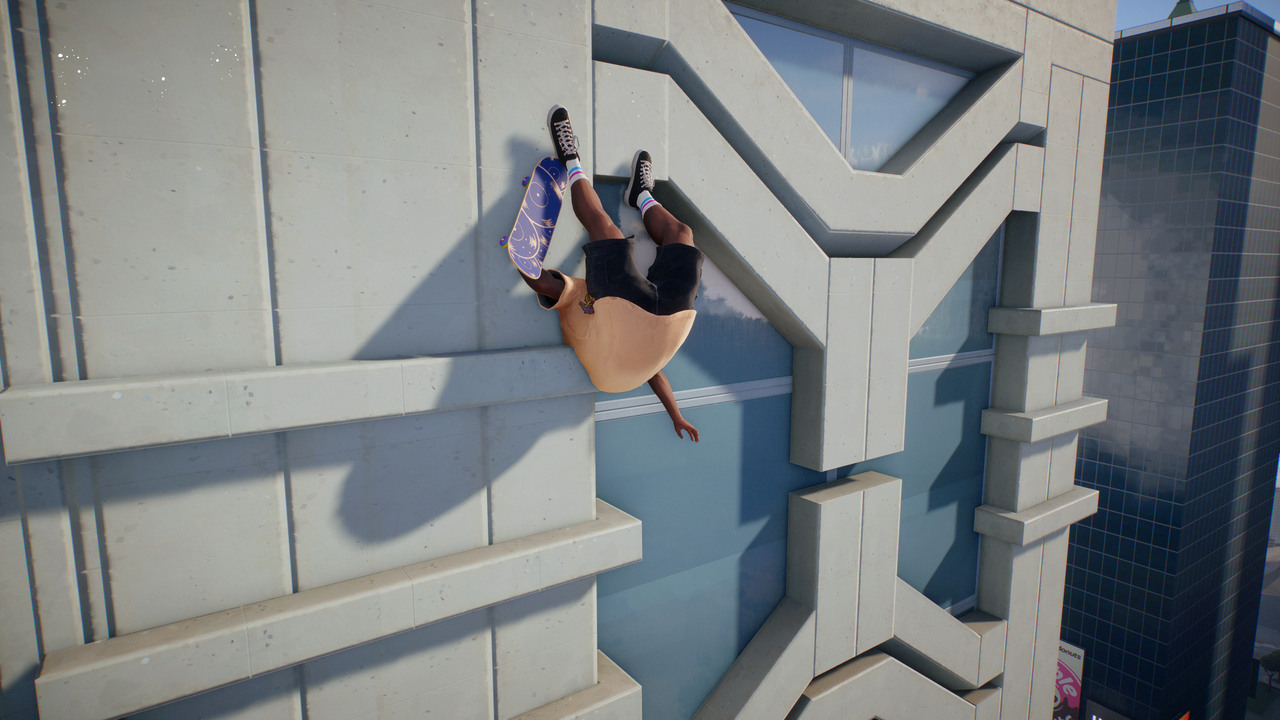
There are a few lingering bugs, however they’re mostly hilarious ragdoll glitches, not game-breaking. Accessibility is also very thin: just language and camera tweaks so far. No colorblind modes or remappable controls yet, which is disappointing. Overall, though, this is skate. at its mechanical peak—fluid, expansive, and endlessly replayable.
Shredding with the Squad — Massively Multiplayer Mayhem
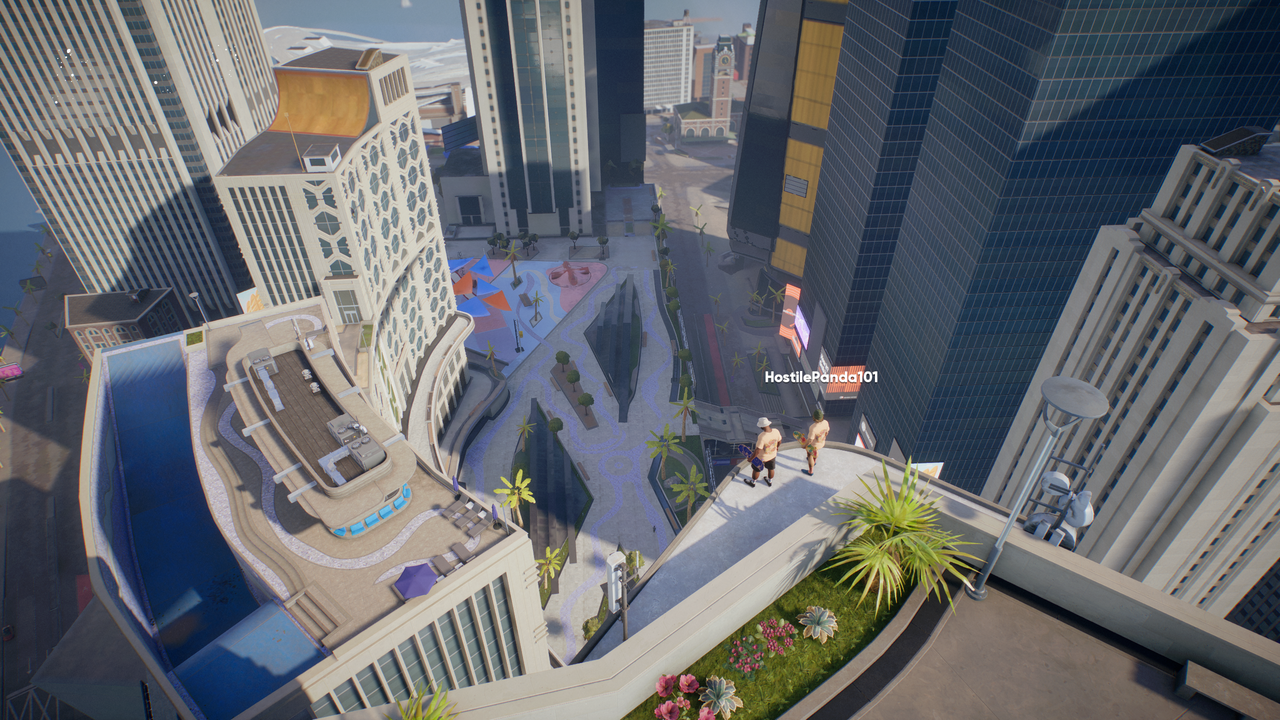
Multiplayer elevates the already great foundation even more. The MMO world lets you spawn ramps, rails, and obstacles anywhere, visible to nearby players for collaborative park-building. Turn a barren rooftop into a vert paradise, then shred with nearby players or invite your friends to join. Everything is incredibly seamless. The spawning menu is quick and intuitive, allowing for on-the-fly creativity that turns empty spaces into dream skateparks.
Most challenges support co-op, letting you team up with friends to tackle objectives together. Or just free Roam San Van, sharing laughs over epic fails. Skate Jams serve as competitive hubs scattered across the map, where skaters converge for real-time score battles, fostering a sense of community. Server performance holds up well in early access, with minimal lag during sessions. Oddly, the classic S.K.A.T.E. mode (like HORSE) is missing; a staple from Skate 1-3. Hopefully it’s patched in soon to add that one-on-one rivalry.
Progression & Challenges — A Satisfying Grind
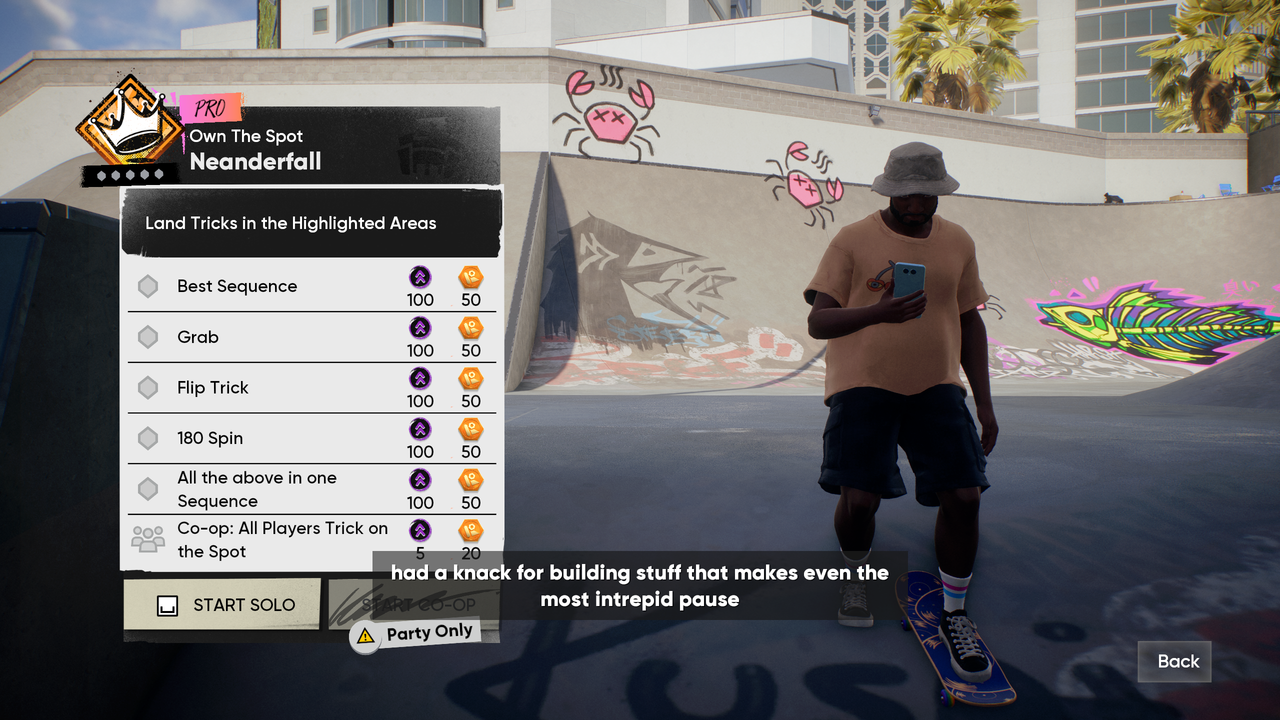
The progression loop is solid: tackle challenges to earn rep and currency for cosmetics, boards, or build items. Main missions orchestrated by the various crews of San Vansterdam introduce regions and mechanics, doubling as tutorials. These missions not only teach advanced techniques but also spotlight hidden gems in San Van. As you level up rep with each crew, you unlock new rewards and tougher tasks, creating a satisfying sense of growth.
Challenge types have variety that keeps things fresh. Line challenges demand flawless trick chains while collecting bearings scattered along a path, with no bails allowed. On harder difficulties, it can get tense, pushing you to perfect every move. Own the Spot requires nailing sequences in designated zones, like linking a manual into a grind then a 360 flip out, rewarding creativity and precision in compact spaces. Stunts bring pure mayhem: dive-bomb targets from dizzying heights with precision. From soaring through gaps in a bridge to plummeting into a canal, it adds adrenaline-fueled breaks from traditional skating.
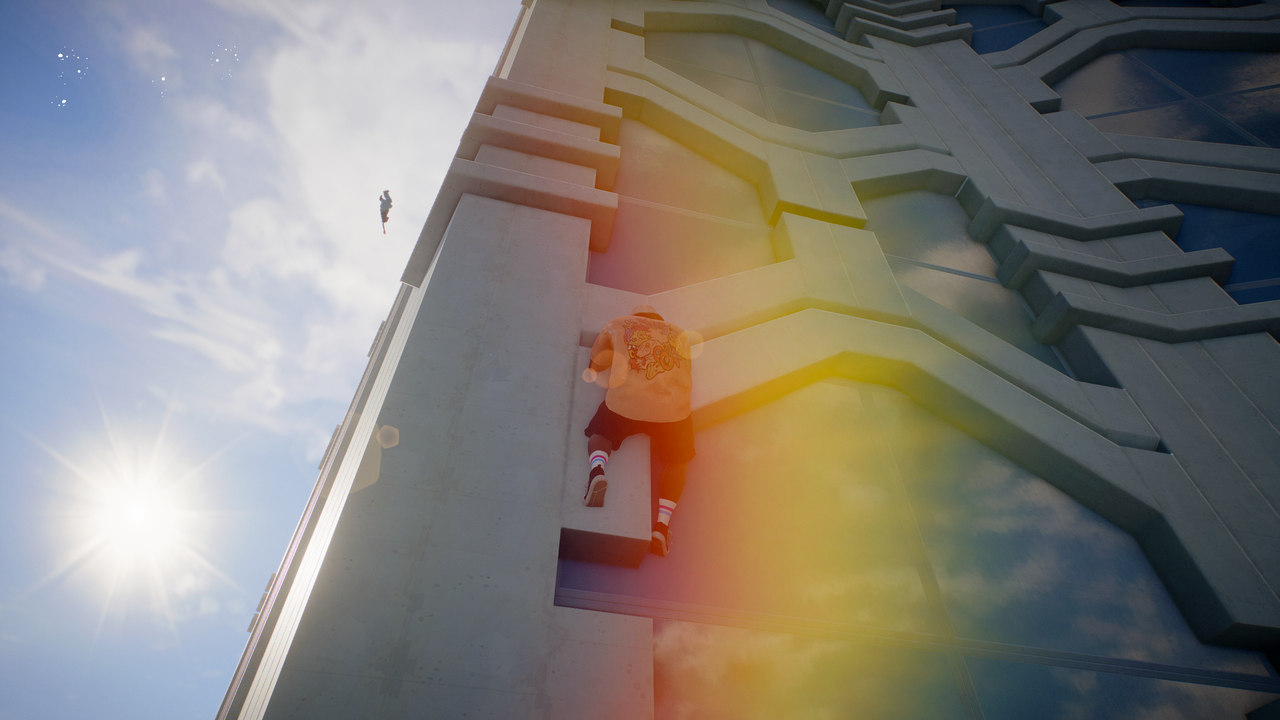
Challenges have three different levels of difficulty, from amateur gaps for beginners to pro-level lines that demand pixel-perfect timing and robust trick repertoire. You will usually have 3-5 objectives based on the difficulty, but it’s not necessary to complete all the objectives. You will still be rewarded, albeit far less, if you can only complete a few of the objectives. Overall, the system strikes a fair balance, motivating regular logins without feeling grindy.
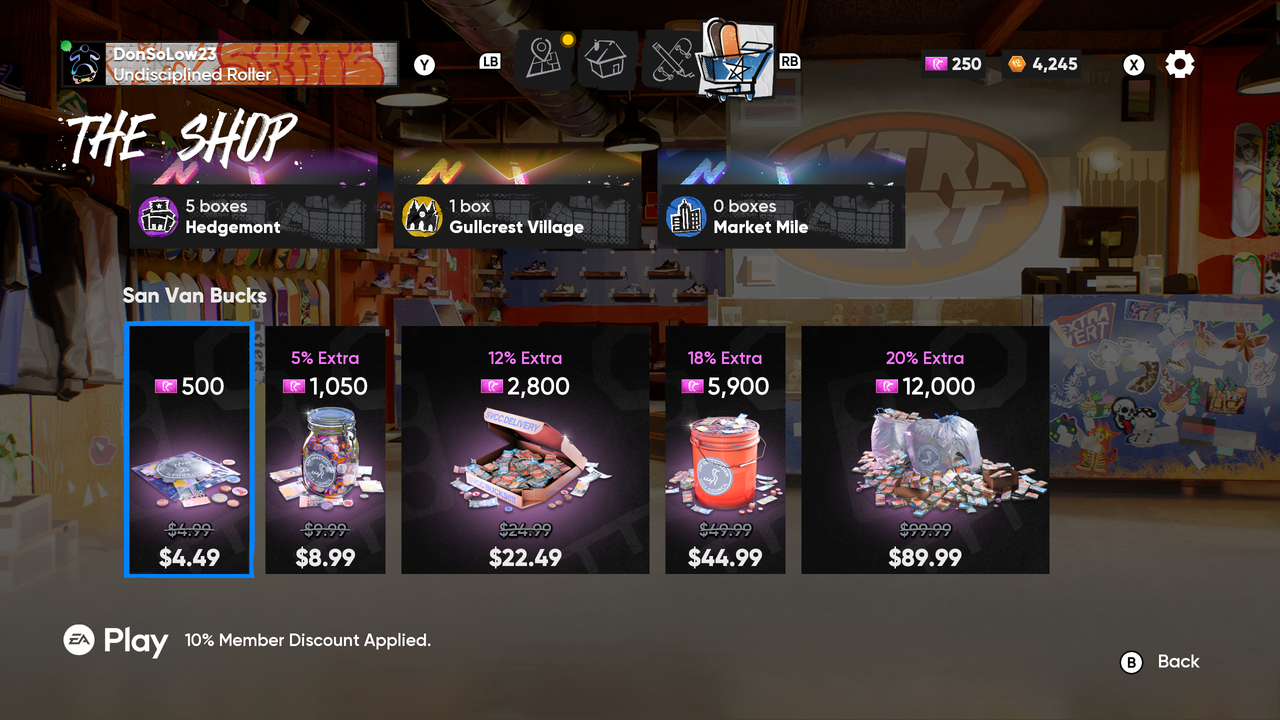
The shop offers different loot boxes for each region, bought with currency you earn in-game. Earning rep unlocks more loot boxes to choose from. With it being free-to-play, microtransactions are here via San Van Bucks for premium items, but nothing pay-to-win. San Van bucks are pretty in line with other free-to-play titles. Skill reigns supreme, and you can grind for a lot of cool cosmetics without spending a dime. The prices are pretty in line with other Free-to-play titles. No “skate pass” though, which might be a nice omission for some.
Conclusion — An Awesome but Sanatized Skateboarding Sandbox
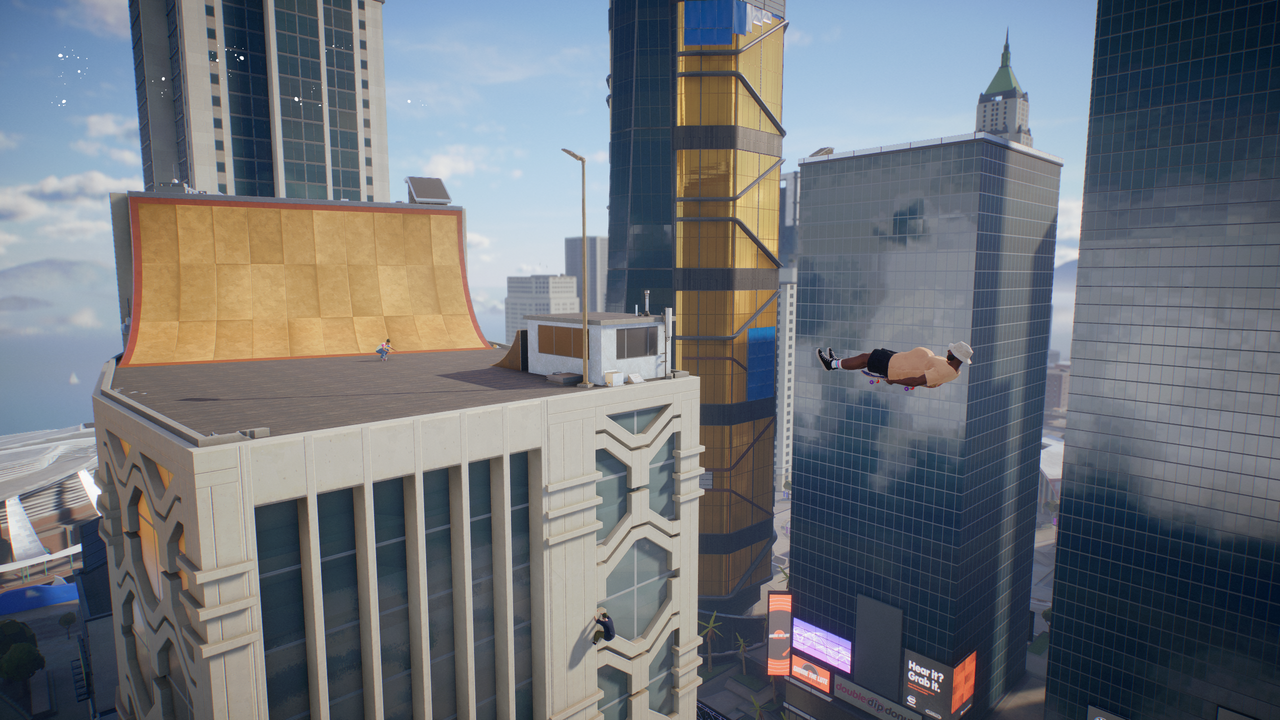
In early access, skate. tantalizes with stellar gameplay that outshines its predecessors, blending classic controls with fresh flair in a vibrant online world. But the soulless tone and visual downgrades drag it down, making it feel like a revival for skaters, by corpos. Diving deeper, the free-to-play model opens doors for ongoing updates, which could address these gripes, such as seasonal events with real pro collabs or grittier story expansions. Ultimately, it’s worth jumping in for the core loop alone, especially with friends. It’s a fun flick back into the franchise, but missing that authentic edge.

